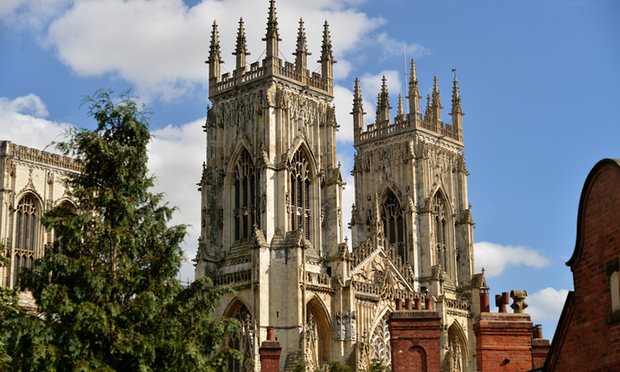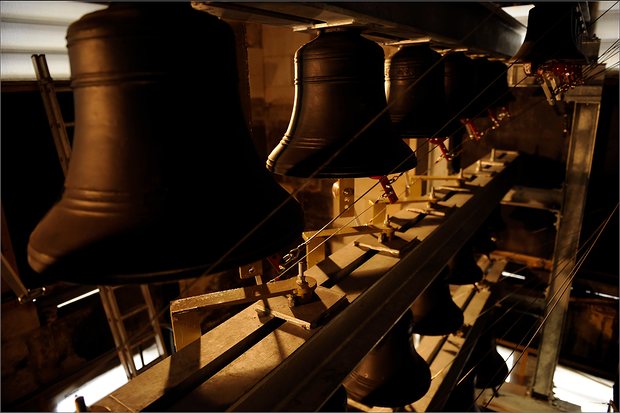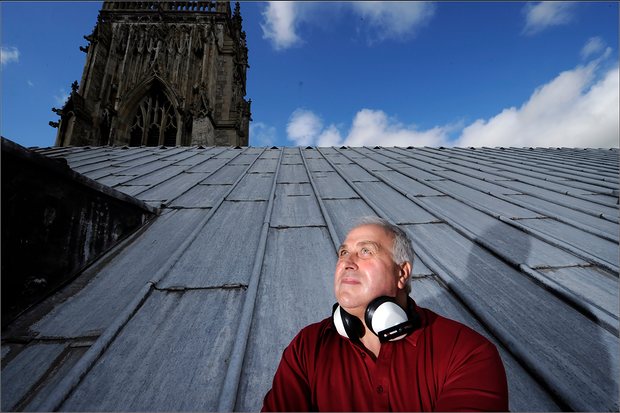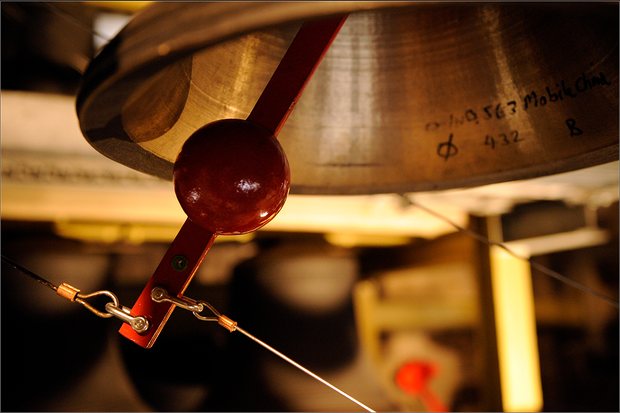How York Minster Bellringers" Sacking Blew the Lid off Bitter Dispute
By Harriet Sherwood
Behind a locked door in York Minster, 100 stone steps spiral up to the door of the bell chamber. A second key is needed to enter the room, revealing spectacular views over the city and surrounding countryside. At its centre hang thick ropes leading up to 14 bells, with the heaviest weighing in at three tonnes. It was in this chamber that the minster’s volunteer campanologists regularly gathered to make music, exercising a creative skill that was regarded by many as the best in the country. But that all ended last Tuesday, when the 30-strong bellringing team was summoned at short notice to a meeting which blew the lid off the tensions that been simmering for months within the walls of the 15th-century cathedral. According to bellringers’ accounts, those present were abruptly told they were being sacked. A few minutes were allowed for questions, then letters were handed to the assembled men and women, some of whom had been members of the York Minster Society of Change Ringers for decades. The minster’s famous bells would be silent forthwith. A new team of volunteers under a paid head bellringer was to be recruited in the new year. Those present were welcome to reapply. The reasons for the move were given as health and safety and risk management.
By the time the meeting was over, the locks to the tower had already been changed, even though all the numbered keys were held by the eight-strong force of York Minster police and only handed to bellringers on request. (York Minster is one of only seven churches in the world to have a dedicated police force.) The shocked ringers say they offered to go to the tower to change the bells’ position from up to down, safer for a period of abeyance. Their offer was declined; the next day the minster brought in a specialist from Taylor’s Bell Foundry in Loughborough to do the job for a substantial fee. The news of the bellringers’ dismissal caused an outcry. Dave Taylor, the lord mayor of York, described the move as “shocking and unreasonable” and York Central MP Rachael Maskell said it had been “disproportionate”. Some of the bellringers expressed anger and dismay on social media, and messages of support poured in from around the country. Six days after the meeting, John Sentamu, the archbishop of York and the second most senior person in the Church of England, held a press conference at which he disclosed that a safeguarding issue lay behind the mass dismissal. Reading a statement from the minster’s governing body, the Chapter of York, Sentamu said: “Earlier this summer it was necessary for the chapter to take action regarding a member of the bellringing community on safeguarding grounds. This came after complex multi-agency activity involving the City of York council, York diocese safeguarding adviser and the Church of England’s national safeguarding officer.” Since then, some campanologists had “consistently challenged the chapter’s authority on this and other important matters”, he added. Decisive action had been required. “This is why the chapter took the decision to disband the bellringing team last week.” Few of the people closely involved in the drama were willing to speak on the record this week. But accounts from both sides suggest that the dispute centres on David Potter, a leading figure in the bellringing team who has been the subject of two police investigations following allegations made in 1999 and 2015. On neither occasion were charges brought.
In January 2000, days after Potter had been awarded an MBE for bellringing services over three decades, he was suspended as ringing master at York Minster and from his job as a teacher after claims of indecent assault. The following month, the police said he would not be charged. Last year, Potter was the subject of another police investigation. “In June 2015 North Yorkshire police applied for a sexual risk order following concerns raised during multi-agency safeguarding processes about a 66-year-old York man and his contact with children,” the force said in a statement. “The order was initially granted by York magistrates court on an interim basis pending final determination. Ultimately the court refused to grant a sexual risk order, but other safeguarding measures were put in place by other authorities.” Despite the court’s conclusion, senior officials at the minster are understood to have read testimonies and other material which led them to conclude that steps needed to be taken. The Church of England, conscious of its past failures regarding survivors of sexual abuse, is determined to do better in protecting children, young people and vulnerable adults. Whereas in the past allegations of abuse were often ignored, dismissed or covered up, the church now favours swift action where it feels it is appropriate. In July, Potter was excluded by York Minster from its team of volunteer bellringers on safeguarding grounds. Potter could not be reached for comment, but his solicitor has been quoted as saying “the process that he has been subject to has shown a disregard for due process and equally the treatment of his fellow bellringers”.
Other members of the bellringing team rallied round their former captain. Some say there followed an attempt to frustrate the church’s safeguarding efforts, particularly by members of Potter’s extended family, who form the core of the team of bellringers. As ranks closed, the minster authorities were forced to act to regain control of the bell tower. It was in the hands of a “fiefdom”, said one church insider. On the other side of the bitter dispute, Potter’s supporters accuse the minster’s dean, Vivienne Faull, of being a “control freak” – although she is highly regarded within the church for her competence, energy, warmth and honesty. Potter’s friends say both allegations were found to be groundless. “These days all you have to say is that someone touched you 20 years ago. Everyone’s absolutely petrified. You can easily become a sitting target,” said one. The friend said the bellringers were “close-knit group, but not secretive or closed – there are no funny handshakes. They’ve always welcomed new ringers, although you have to choose carefully so they’re cautious about who they let in.” Teaching bellringing involves physical proximity. “The learner is encompassed physically while learning to pull the ropes. Navigating the accepted limits and boundaries of physical contact can be difficult,” said one vicar who has had to deal with safeguarding issues within his bellringing team. Between 30,000 and 40,000 bellringers operate in about 5,000 churches in the UK, according to Kate Flavell of the Central Council of Church Bell Ringers. It takes about 10 hours to learn the basic technique “but a long time – years – to perfect it”, she said. Some bellringers became “wild enthusiasts”, practising in different churches every night of the week, she added. In York, the bells will remain silent until a new ringing team is in place. A week after the dismissals, more than 16,000 people had signed a petition urging the minster to permit the sacked ringers to ring the bells on Remembrance Sunday and at Christmas. A former ringing master, Peter Sanderson, accused the chapter of “doublespeak [that] would hardly be out of place in George Orwell’s most famous work”. Meanwhile, a spokesperson for the minster said: “We remain committed to embedding a strong safeguarding culture across the minster despite the protests that have resulted from our actions.” • This article was amended on 20 October 2016. An earlier version said that York Minster and St Peter’s Basilica at the Vatican are the only churches in the world to have dedicated police forces. They are in fact two of seven churches in the world to have dedicated police forces.
|
.
Any original material on these pages is copyright © BishopAccountability.org 2004. Reproduce freely with attribution.



